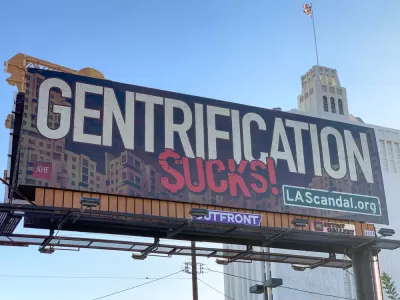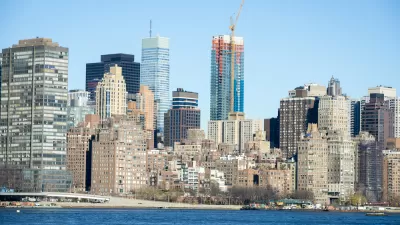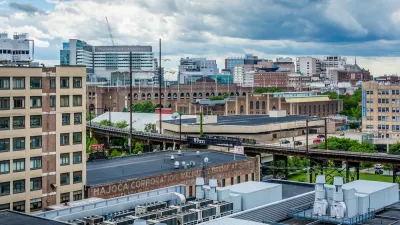Most likely, no one in particular—but policy changes can alleviate the housing shortage and prevent displacement.

As more neighborhoods and cities experience the impact of redevelopment, often termed gentrification, people seek individual culprits to pin the blame on. Whether it is the owners of the hip new coffeeshop, the developer building that new building, or the young professionals renting or buying homes in previously undesirable neighborhoods, the human need for attribution leads us to discount broader, institutional forces, according to Alan Ehrenhalt’s recent piece in Governing.
While “yuppies” or “hipsters,” whatever the term du jour is, are an easy target—“Most seriously, they raise rents and property taxes and inevitably force some poorer inhabitants to look elsewhere for lodging”—Ehrenhalt argues that “To hold them responsible for the discomforts of gentrification is essentially to blame the customer.”
Gentrification’s suppliers, Ehrenhalt writes, are indeed real estate companies and developers. “Yet for developers and landlords to be the true villains of gentrification, it would be necessary to determine that they are worse stewards than the small property owners who dominated poor neighborhoods in pre-gentrification days. There is no real evidence that this is the case.”
The real problem, according to Ehrenhalt, is the shortage of affordable housing supply and construction. “It’s the fault of an entrenched and complex system that has existed for decades and doesn’t have a perpetrator to put the finger on.”
To Ehrenhalt, “The only way to make a serious dent in the shortage of moderately priced housing is to encourage more of it without demonizing the people living comfortably under the current rules.”
While eliminating single-family zoning and permitting light density increases is one avenue for creating more housing, these policies probably won’t make a significant dent in the million of housing units needed to alleviate the current shortage. Ehrenhalt concludes, “To me, the only practical zoning solution is to stick to commercial corridors, and to build big there — tall apartment buildings, not duplexes or fourplexes” near transit lines that can accommodate families.
FULL STORY: Gentrification and the Search for Villains

Alabama: Trump Terminates Settlements for Black Communities Harmed By Raw Sewage
Trump deemed the landmark civil rights agreement “illegal DEI and environmental justice policy.”

Planetizen Federal Action Tracker
A weekly monitor of how Trump’s orders and actions are impacting planners and planning in America.

The 120 Year Old Tiny Home Villages That Sheltered San Francisco’s Earthquake Refugees
More than a century ago, San Francisco mobilized to house thousands of residents displaced by the 1906 earthquake. Could their strategy offer a model for the present?

Opinion: California’s SB 79 Would Improve Housing Affordability and Transit Access
A proposed bill would legalize transit-oriented development statewide.

Record Temperatures Prompt Push for Environmental Justice Bills
Nevada legislators are proposing laws that would mandate heat mitigation measures to protect residents from the impacts of extreme heat.

Downtown Pittsburgh Set to Gain 1,300 New Housing Units
Pittsburgh’s office buildings, many of which date back to the early 20th century, are prime candidates for conversion to housing.
Urban Design for Planners 1: Software Tools
This six-course series explores essential urban design concepts using open source software and equips planners with the tools they need to participate fully in the urban design process.
Planning for Universal Design
Learn the tools for implementing Universal Design in planning regulations.
Clanton & Associates, Inc.
Jessamine County Fiscal Court
Institute for Housing and Urban Development Studies (IHS)
City of Grandview
Harvard GSD Executive Education
Toledo-Lucas County Plan Commissions
Salt Lake City
NYU Wagner Graduate School of Public Service





























